Your zero-turn mower has several steps that need to be followed in order to start the engine. This is because a safety interlock system is used that won’t allow the mower to start without the PTO switch off, the brake on, and the mower in neutral.

Before attempting to start and operate your zero-turn check these items:
- Make sure your fuel shut-off valve(s) is open.
- Verify the engine oil is at the full level on the dipstick.
- Check the hydraulic oil level in the overflow tanks.
- Ensure you have sufficient fuel.
- Clean debris and dirt from the engine, exhaust system, and cutting deck.
- Check the air filter to make sure it is clean and not damaged.
- Make sure the safety interlock system is working.
- The seat belt and rollover protection system (ROPS) must be in good condition and working.
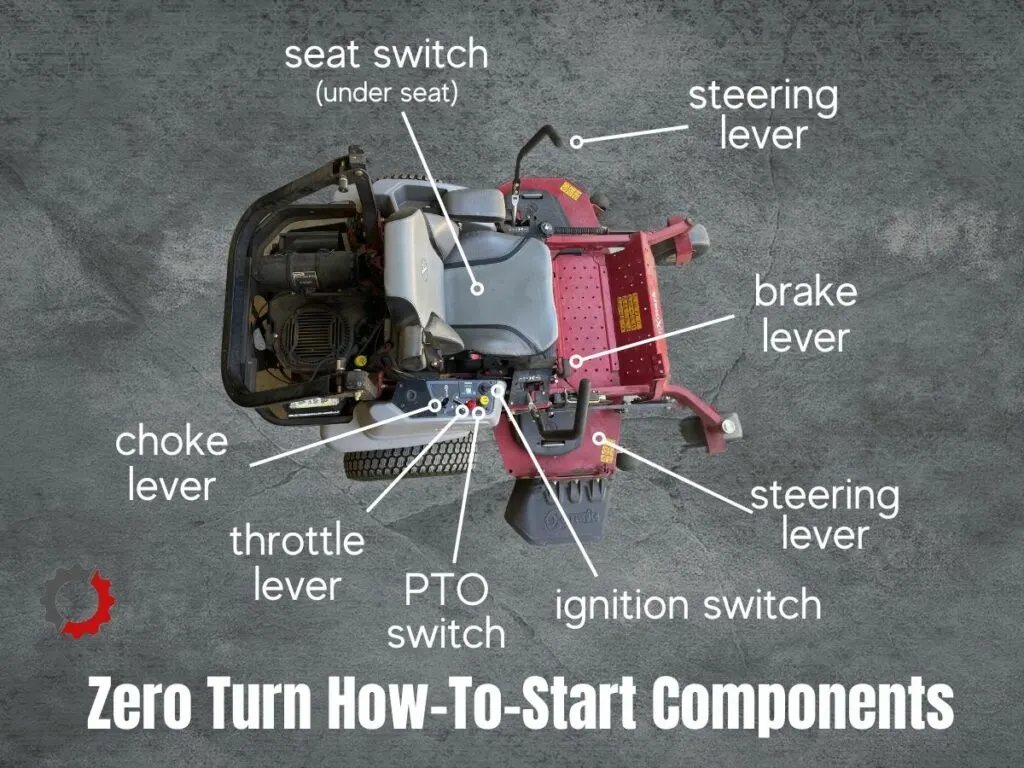
Steps to Start a Zero-Turn Mower
1. Move the Motion Control Lever to the Neutral Position
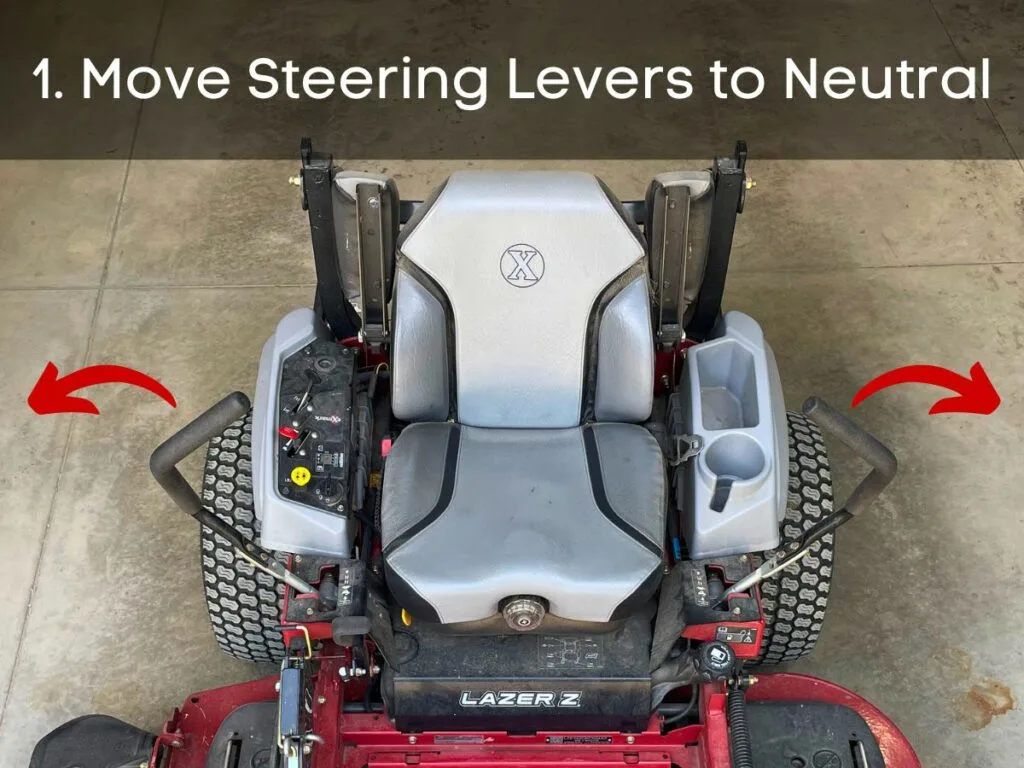
Open the motion control levers (steering levers) to the widest position. This is the neutral position.
2. Engage the Parking Brake
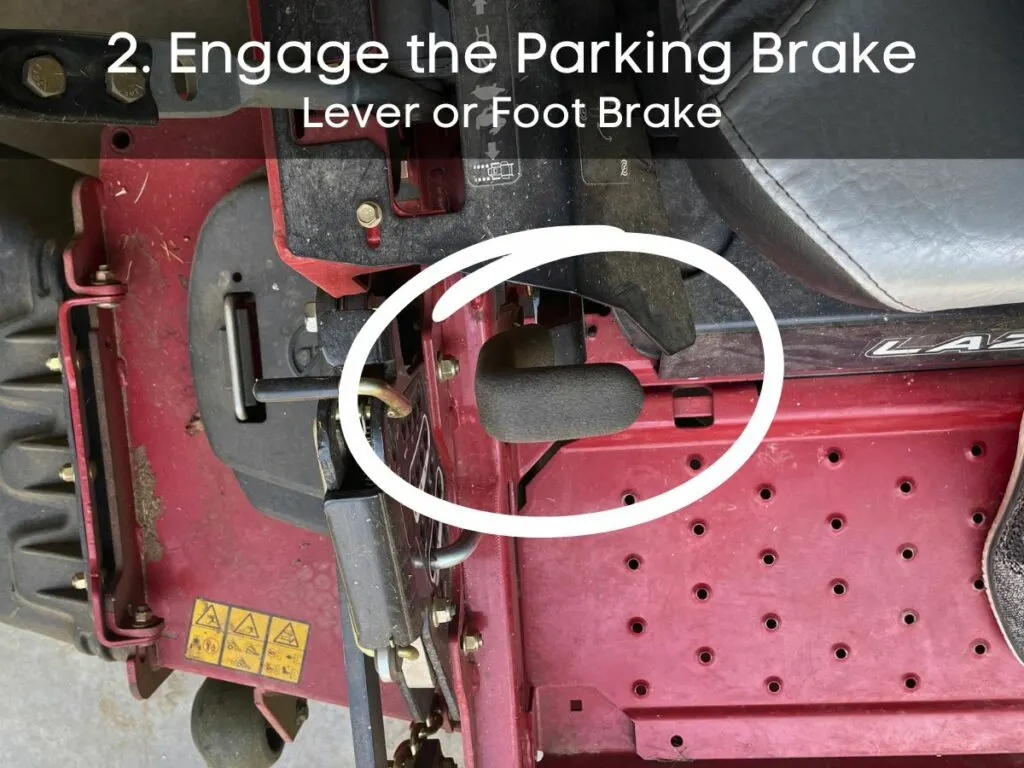
The parking brake on your zero-turn may be engaged using a lever or a foot pedal. If you don’t find one, the brake may be engaged once the levers are placed in the neutral position.
3. Push Down on the PTO Switch
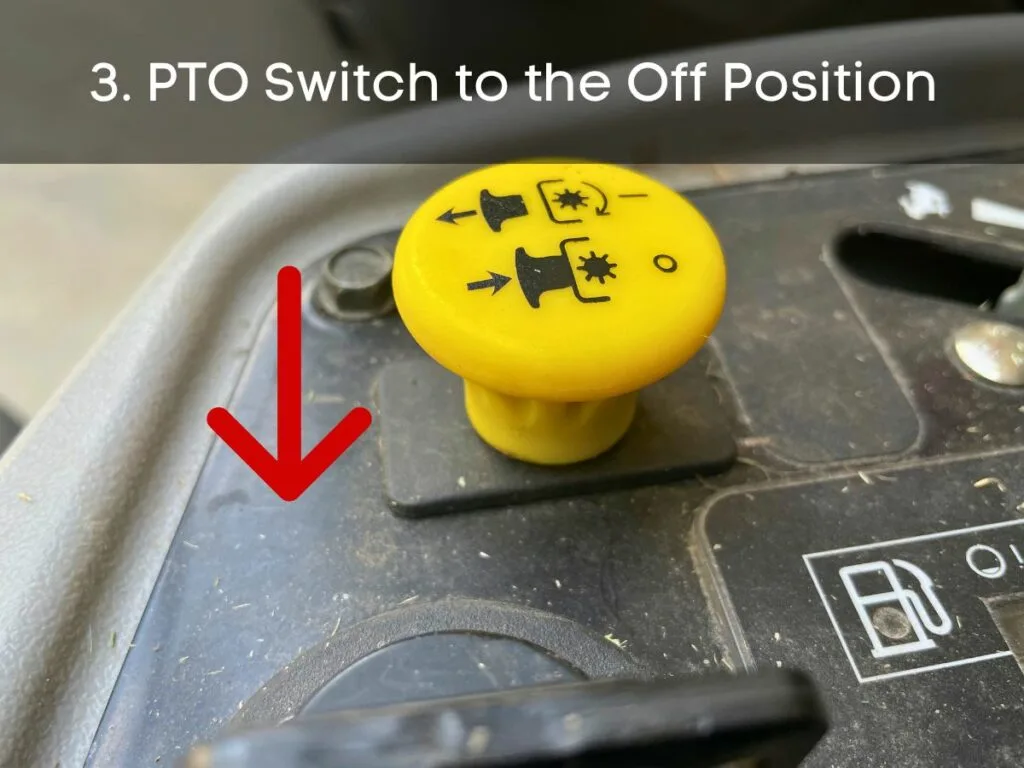
The PTO switch is what turns on the mower blades. This switch must be in the off position (pushed down) in order to start the engine.
4. Place the Throttle Lever Between Slow and Fast Positions
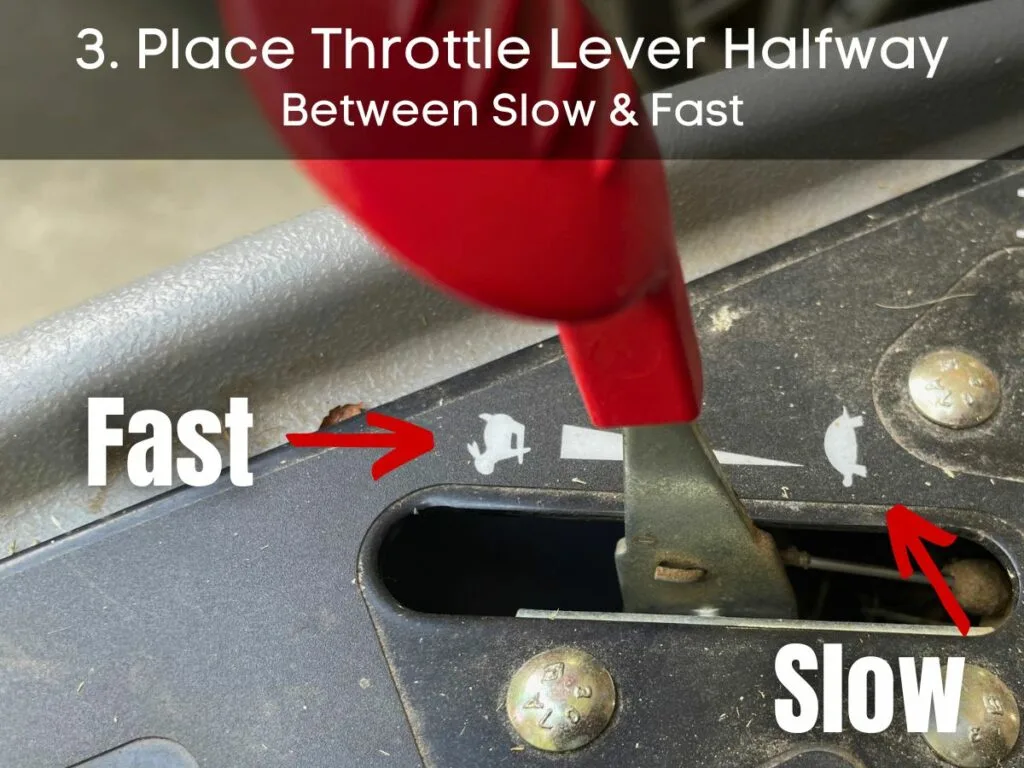
Adjust the throttle lever so it sits halfway between the slow (turtle) and fast (rabbit) positions if you have a separate choke lever or knob.
If you don’t have a separate choke lever, place the throttle lever at full throttle to engage the choke to start a cold engine.
5. COLD ENGINE: Place Choke in the On Position
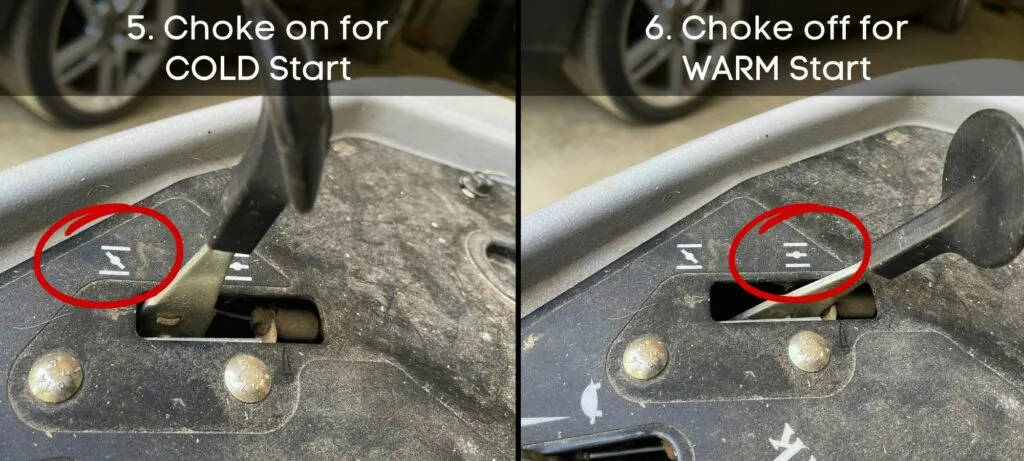
The engine requires a rich fuel mixture to start a cold engine. This means it needs more fuel and less air. By placing the choke in the ON position, the choke plate closes restricting air and allowing this rich mixture.
Once the engine starts, the choke must be adjusted to the off position to get the right air and fuel mixture to keep the engine running.
If you have a lever, move it to the choke open position. If you have a knob, pull up on the knob.
6. WARM ENGINE: Place Choke in the Off Position
A warm engine doesn’t need a rich fuel mixture. The choke must be in the OFF position so the choke plate remains open.
If you have a lever, move it to the choke closed position. If you have a knob, push down on the knob.
7. Turn the Key in the Ignition Switch to the Start Position
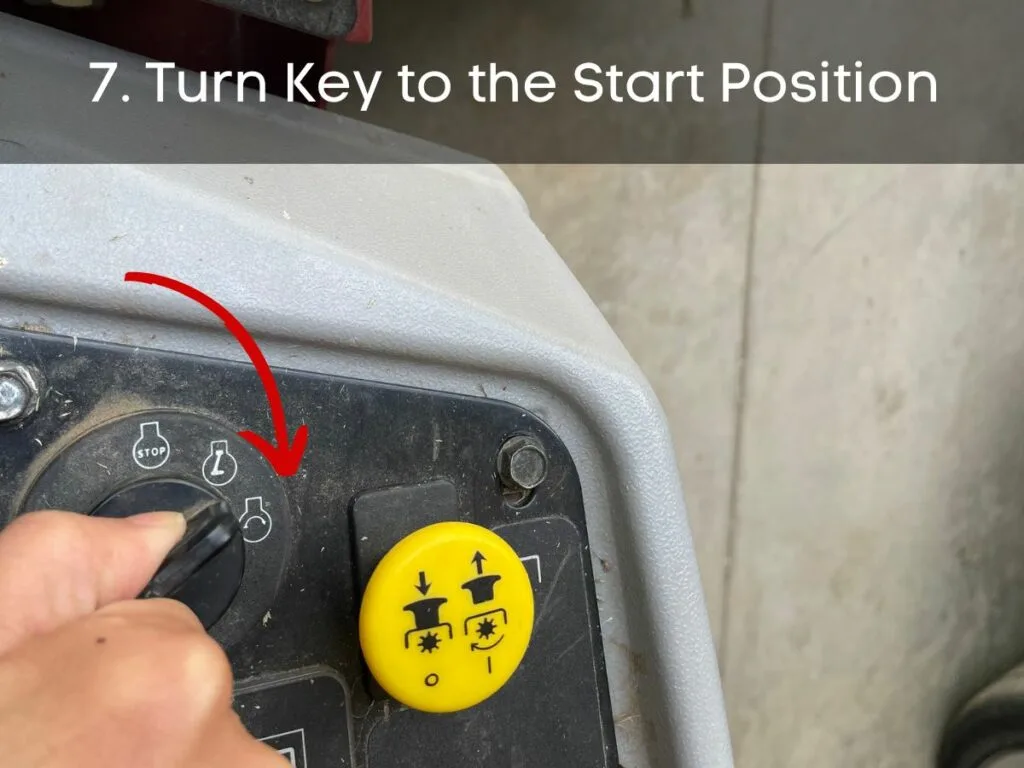
Place the key in the ignition switch and turn the key to the start position. Release the key once the engine starts.
Don’t continue to hold it in the start position for more than 10 seconds if the engine doesn’t start. If this happens to you, wait 1 minute before you attempt to start it again.
Your Zero-Turn Still Won’t Start After Following the Steps
If you’re still having problems starting your mower, you may have a problem with the electrical, fuel, or air intake systems.
This could be due to old fuel, a weak battery, a bad starter solenoid, loose wiring, a dirty carburetor, or several other items. Check out this article to help identify your starting issue so you can get your mowing tasks completed.
How to Stop and Shut-Off Your Zero Turn Mower
- Bring your mower to a stop so it longer moves forward or in reverse.
- Move the steering levers to the neutral position so they are in the outward position.
- Set the parking brake.
- Move the throttle lever halfway between the slow and fast positions.
- Allow the engine to run for at least 30 seconds.
- Turn the key in the ignition switch to the off position.
